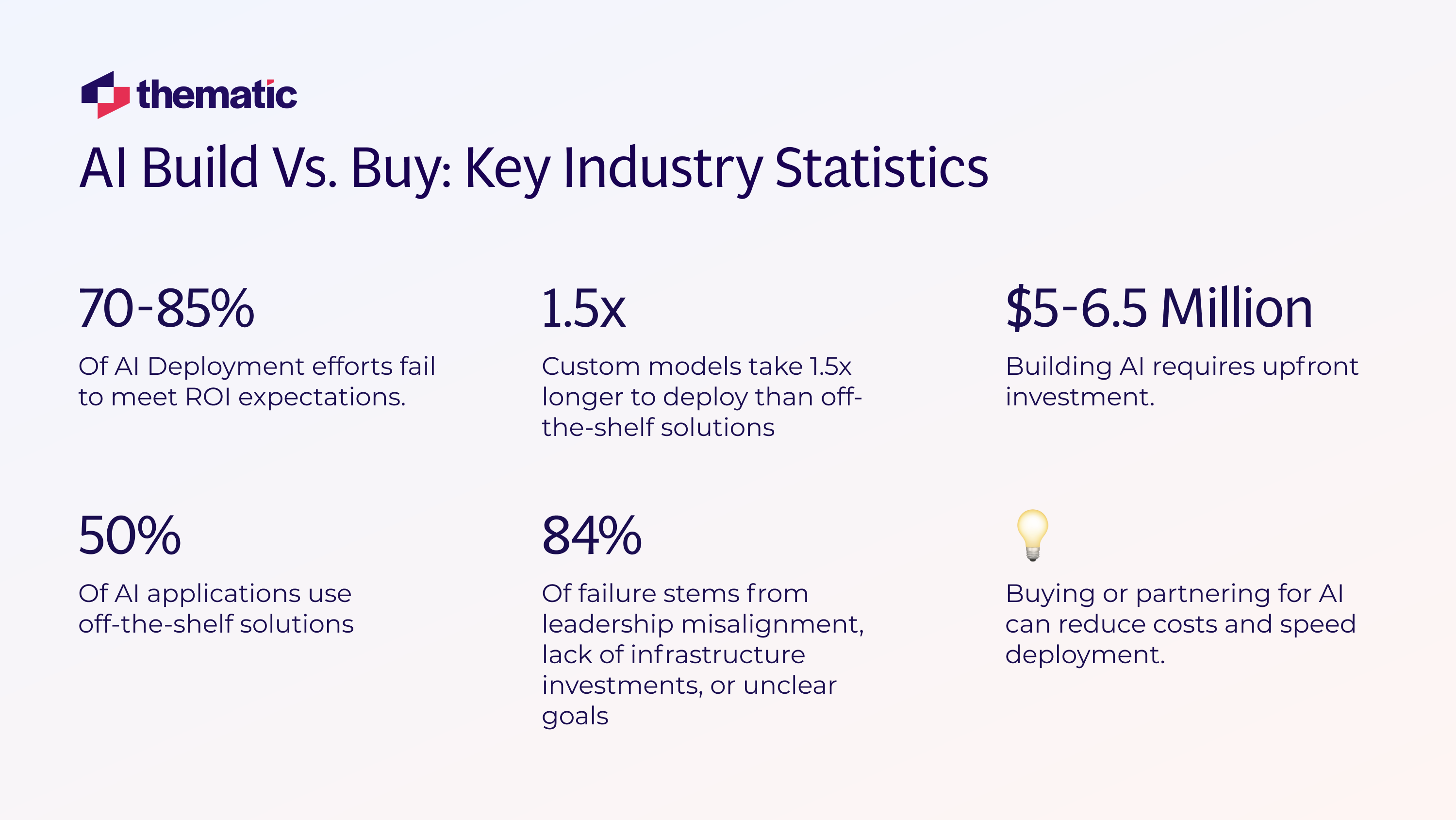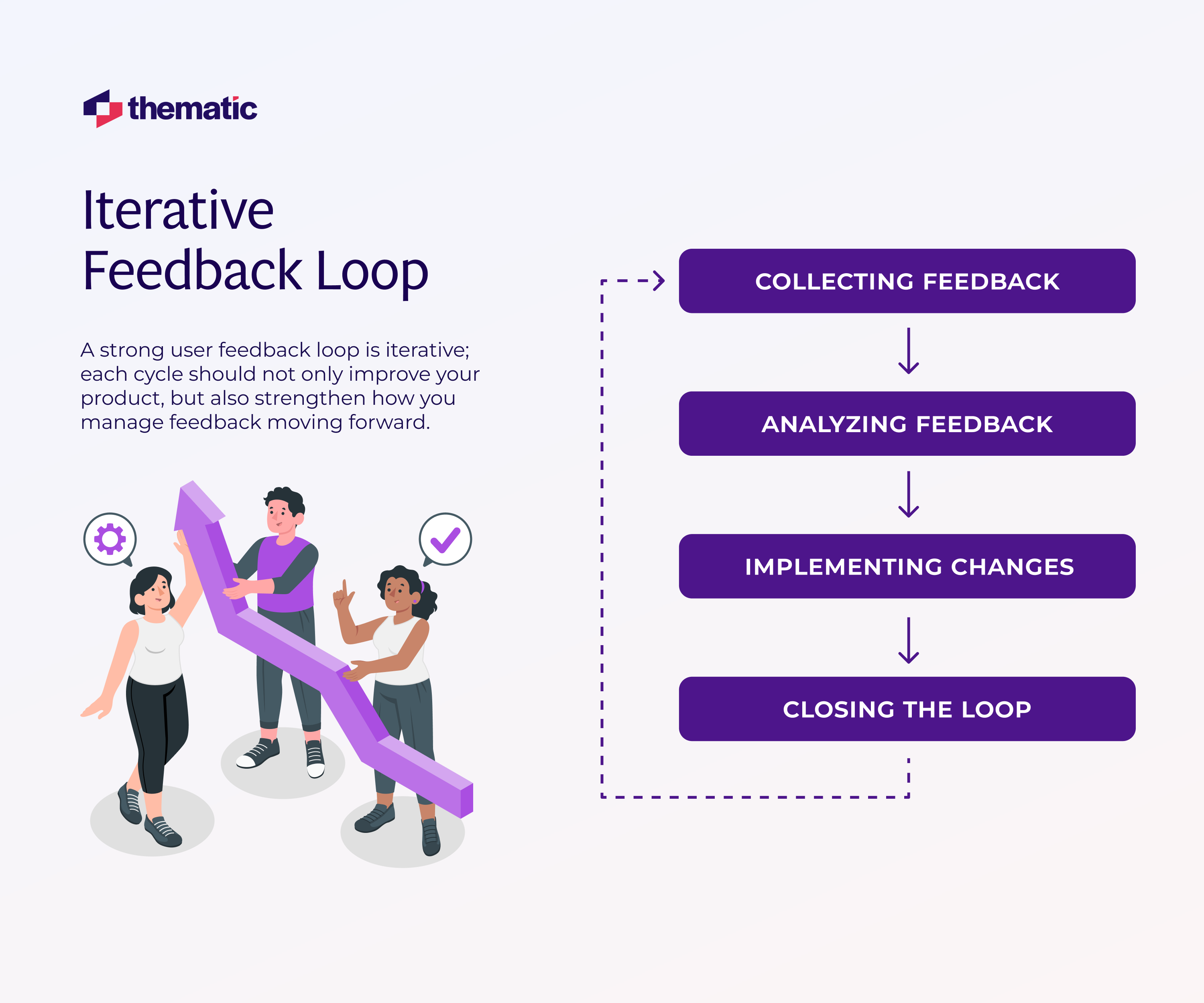
When “buy” is too rigid and “build” is too slow, learn how a hybrid build-partner model speeds Customer Feedback AI ROI. Plus grab our full guide.

In the world of customer feedback AI, teams face a tough choice: pour resources into a custom in-house system or rely on a one-size-fits-all tool for qualitative data analysis.
Fully DIY builds can be costly and slow, while off-the-shelf solutions often feel limiting. Is there a smarter path that avoids both pitfalls? Many organizations believe so. They’re exploring a hybrid build partner customer feedback AI strategy that combines the best of both worlds.
This balanced approach promises tailored insights without starting from scratch, though it does mean sharing roadmap control with a vendor.
In fact, our new buy-build-partner downloadable guide maps out every decision layer in this process, helping you decide what to build, what to buy, and how to blend the two for maximum impact.
But for today, let’s take a peek at how a hybrid build-partner customer feedback AI works.
Turning the voice of customer into actionable insight can follow three paths:
Navigate the complex decision of implementing AI feedback analytics with a structured, layer-by-layer evaluation approach that moves beyond simple build-vs-buy choices.

You don’t have to settle for all-or-nothing. Hybrid speeds deployment, yet shared control can
A hybrid strategy lets you blend innovation with practicality. You focus on strategic differentiation while the vendor provides proven AI building blocks. This balance can significantly cut time-to-value and risk.
Between 70–85% of AI projects fail to meet ROI goals, and custom models take about 1.5× longer to deploy than off-the-shelf solutions.
But, here’s when a hybrid may not fit:
When you go hybrid, you’re not giving up what makes you unique. You still build and tailor the parts that set you apart, while outsourcing the rest. In practice, build what differentiates you, buy what commoditizes quickly, and partner for flexibility on everything else.

To structure your hybrid solution, break it into six layers, essentially a modern data stack for feedback AI that enables unified data analytics. Each layer presents a choice to build in-house, buy off-the-shelf, or partner:
Our downloadable buy-build-partner guide includes a full layer-by-layer checklist to help with these decisions. The guide’s flip slide also scores each layer for hidden costs and pitfalls, giving you a full picture before you decide.
Real-World Example: Atlassian’s Hybrid Feedback Loop

Atlassian, the team behind Jira, Confluence, and Trello, faced this exact dilemma. With over 250,000 customers, they were drowning in user comments across support tickets, community forums, and app store feedback, a massive customer review analysis challenge. There was plenty of feedback, but no easy way to make sense of it all at scale. Atlassian’s leaders envisioned an “infinite” customer feedback loop powered by AI.
Instead of building everything from scratch, they spent a year evaluating options and ultimately partnered with a specialist (Thematic) to co-develop the solution. This hybrid approach combined Atlassian’s own data pipeline with Thematic’s text analytics engine and expertise in thematic analysis. Together, they automated the grouping of feedback by themes and sentiment, turning unstructured input into organized insights on a central dashboard.
The results were transformative. Atlassian still dedicates developer time to maintain its bespoke data pipeline, a cost pure SaaS users avoid. Atlassian introduced a new “heardness” metric to gauge whether customers felt their feedback was addressed. When users felt heard, satisfaction (CSAT) climbed, and issue resolution time dropped by 50%. What started as scattered complaints became a continuous feedback engine informing product roadmaps and UX improvements.
In short, feedback went from overwhelming to actionable. When companies close the loop like this, they not only boost customer happiness, they often see gains in loyalty and retention, reflected in higher NPS and lower churn. Atlassian’s success demonstrates how a hybrid build-partner customer feedback AI strategy can turn a sea of customer input into a competitive advantage.
Bringing a hybrid solution to life is a structured process. Here’s a five-step playbook to guide your team (from initial prep through scaling):
Before anything, assess your starting point. Do you have executive buy-in, an AI-savvy team, and clean data to feed the system? Many AI projects fail due to misalignment or lack of infrastructure. Be honest about gaps (talent, data, budget) and address them upfront.
Identify which layers or components you want to co-develop rather than outsource. Pinpoint a vendor whose strengths complement your gaps, one that offers the flexibility to customize where it counts. Establish clear roles, responsibilities, and success criteria together.
A good partner will collaborate on your unique needs rather than push a one-size-fits-all product.
Don’t try to “boil the ocean” at first. Instead, kick off a focused pilot with a manageable scope, such as analyzing feedback for one product or region. Keep the timeline around 2–3 months. This creates a sandbox to integrate with your data, fine-tune the model, and prove value quickly. Make sure both your team and the vendor treat this pilot as a learning phase.
After the pilot, jointly evaluate the outcomes against your success criteria. Use a scorecard to rate performance across dimensions like relevance of insights, accuracy, user adoption, and integration ease. (The guide includes a sample pilot scorecard with these metrics.) Identify what worked and what didn’t. Iterate on any model tweaks, data needs, or process changes before a broader rollout.
With a successful pilot, expand gradually. Roll out to more channels, products, or markets in phases rather than all at once. Continue working with your partner for support as you scale, and avoid the common “pilot purgatory” where projects stall after initial success. This approach delivers faster lift-off and a lower total cost of ownership than a pure DIY build, all with far less risk.
A hybrid build partner customer feedback AI strategy can accelerate your path to ROI when governance, data prep, and change management land well. By not reinventing everything, you can deploy much sooner and start capturing value early.
You also avoid the multi-million dollar sunk costs of a full in-house build, which can run $5–6M upfront, and instead pay incrementally as you see results. In terms of total cost of ownership, partnering often proves more efficient since the vendor handles maintenance as part of the service.
That said, success isn’t automatic. To maximize ROI, watch out for common pitfalls.
With these guardrails in place, the hybrid approach delivers faster lift-off and lower risk than going it alone.
In the end, the hybrid build partner customer feedback AI approach aims to give you the best of both worlds, but only if the fit is right. You achieve the speed and efficiency of vendor solutions without sacrificing the custom fit that your business needs. This means faster time-to-value, lower project risk, and a solution that can grow with you.
Our downloadable guide dives even deeper. It provides a detailed decision tree, checklists, and worksheets to help you figure out your ideal mix at each layer.
Download the guide for cost calculators, a flip‑side risk matrix, and a step‑by‑step decision tree.
Join the newsletter to receive the latest updates in your inbox.